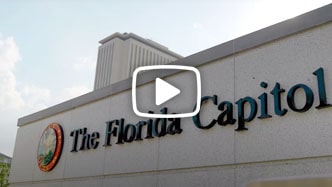Who Is at Fault in a Lane Change Accident in Florida?

Drivers in Florida have a legal obligation to obey all traffic and road rules and drive safely. Before changing lanes, a driver should check adjacent lanes to ensure they are clear. Additionally, a driver should signal before changing lanes. Improper lane changes can lead to accidents that result in serious injuries and even death. After a Florida lane change accident, establishing fault is usually one of the first things people want to do. So, who is at fault in a lane change accident in Florida? Establishing fault after a lane change accident may not be as straightforward as you think. The merging driver is often at fault in a Florida lane change accident. However, Florida’s comparative negligence law allows the fault to be shared if multiple parties contributed to the accident. Read on to learn more.
When Could the Driver Changing Lanes Be at Fault?
There are various scenarios where the merging driver could be held fully responsible for a lane change accident. They include the following;
- The driver failed to turn on their turn signal before changing lanes and collided with another car
- The driver failed to check their mirrors or blind spots and collided with a vehicle beside them
- The driver failed to yield the right of way and collided with a vehicle already in the lane
- The driver turned into a lane without enough distance from other vehicles
- The driver crossed multiple lanes without stopping in each and signaling their intention to change again
When Could Both Drivers Be at Fault?
There are situations where both drivers may be found responsible for the lane change accident. Here are examples of when the other driver could be found liable;
- They behaved aggressively, such as tailgating or deliberately hitting the merging motorist
- They were distracted and did not notice the other driver trying to merge into their lane
- They were under the influence, thus had poor judgment and could not react on time to avoid the collision
Sometimes, other road users may also be to blame after a lane change accident. For instance, if a motorcyclist weaves between lanes, causing a driver to swerve, the motorcyclist could be held liable for the accident.
Comparative Negligence in Florida
Florida follows the comparative negligence rule. Under this rule, fault for an accident can be shared among multiple parties, and a claimant’s compensation may be reduced based on their percentage of fault. If, for instance, you’re involved in a lane change accident and are found to be 20% at fault, your compensation will be reduced by 20%. If you were involved in a Florida lane accident, it’s crucial that you work with a skilled attorney to ensure fault is apportioned fairly.
Proving Someone Else Was at Fault for a Lane Change Accident
Proving someone else caused your Florida lane change accident involves;
- Collective evidence at the scene: If you can, take pictures at the accident scene, including vehicle positions, skid marks, and road signs or signals.
- Obtaining witness statements
- Obtaining a copy of the police report
- Obtaining available video footage
- Consulting experts, such as accident reconstructionists
Contact Us for Legal Help
Contact our Tampa car accident lawyers at The Pendas Law Firm for legal help if you’ve been in a lane change accident.
The Pendas Law Firm also represents clients in the Ocala, Orlando, Jacksonville, Miami, Fort Myers, Fort Lauderdale, Daytona Beach, West Palm Beach, Bradenton, Naples, and Melbourne areas.






